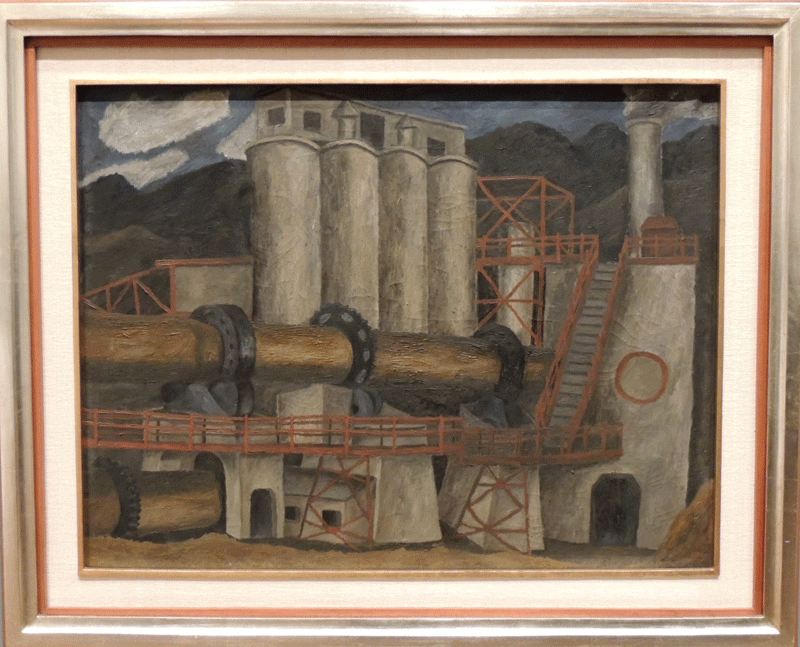Source: WTL photograph© at the Special Exhibition of "Paint the Revolution: Mexican Modernism 1910 - 1950," at the Philadelphia Art Museum, December 13, 2016.
Image:
"The Toltec" (1931) by María Izquierdo (1902-55). Oil on canvas.
Comments: The title refers to the recently completed Tolteca cement plan in Zapotiltic, Jalisco state. María Izquierdo was not a member of the Stridentist group of Mexican artists, but she was interested in urban and industrial developments in Mexico. She and her fellow artists Juan O'Gorman and Rufino Tamayo and the photographer Manuel Álvarez Bravo submitted works in a state-sponsored art competition celebrating this opening of this cement plant. Álvarez Bravo won first prize. She studied at the Escuela Nacional de Bellas Artes, and worked closely (and romantically) with her mentor Rufino Tamayo. Both Izquierdo and Tamayo maintained that art should be more art then politics. Even so, she joined the leftist Liga de Escritres y Artistas Revoluctionaros in 1934. In part, however, this painting is not strictly speaking typical of her style or content. Rather, she developed a style that has been called Surrealist even though she herself never self-identified in that movement. Also, she has been likened to Frida Kahlo; yet there is no direct link between the two. She was the first Mexican woman to exhibit her works in the United States. For other works by her in this series, jump ahead to: => Page #23 and => Page #31. Here is a self-portrait (1940) by María Izquierdo, which is more typical of her unique style, content, and color palette:
Humanities Question: Compare and contrast this painting by María Izquierdo with #20 by Gabriel Fernández Ledesma and #22 by Rufino Tamayo.


